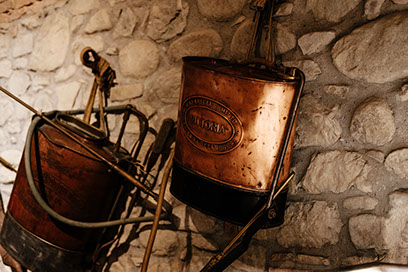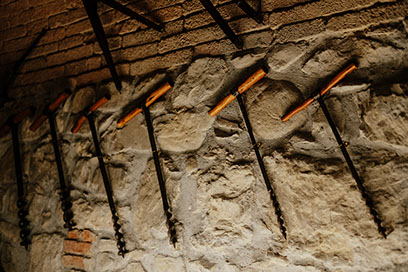
An entrepreneurial family from this territory decided to develop this exhibition area; where one can speak of the traditions and history of this land. This family has indeed been collecting artifacts and materials over the years for this precise purpose.
Lorenzo and Stefano Bencistà Falorni, owners of the famous Antica Macelleria Falorni and of the Enoteca Falorni in the Chianti region (a renowned area for good food and wine), organized the entire set-up. The walls of the place that houses the Wine Museum display the tale of a centennial story.
The walls of the place that houses the Wine Museum display the tale of a centennial story. The museum has always been used as a wine Cellar. Its hallways and rooms, some of which were used as vats for the grapes, have been symbolic of the economical heart of Greve for years now. The walls of the museum have a history full of noble and illustrious owners. Ernesto Leproni built these walls in 1893 and their names and owners have changed over the century. They hosted the Chianti Wine Producer Union in 1906: the union was made up of noble landowners that can be regarded as the founders of the Chianti Classico consortium. Later, they became known as the Mirafiori Cellars under the ownership of Alberto Emanuele Guerrieri: Count of Mirafiori, the eldest son of Bela Rosin and the morganatic son of the Italian King, Vittorio Emanuele II.
In 1919, the nephews of Bela Rosin bought the Greve Cellars and used them to bottle the Chianti wine productions of the Pozzolatico estates: residence of their father, Count Emanuele, who also owned the company called Fontanafredda, in Piedmont. The property was then transferred to the Gancia brothers and later to the company SEVA, owned by the Italian-American Paternò family. Today, the cellars are owned by the Bencistà Falorni family, who transformed it into a tribute to the history of wine and its territory.


